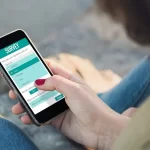In this Covid-19 Pandemic situation, Blended Learning is becoming the need of the hour for students and parents. This type of learning brings easiness and flexibility to students’ learning process. They can study anywhere, anytime at their convenience.
In this article, you will know about blended learning and its benefits.
Blended Learning Definitions:
In this system, students learn using online materials and interact with their teachers with face-to-face communication by using traditional classroom methods. Students can make any place be it home or library as their classroom with access to a PC, Laptop, or any digital device. Students and teachers have to decide the time and place before interacting with each other via face-to-face communication.
Types of Blended Learning:
There are several types of blended learning that students and teachers can use at their convenience. These types are mentioned as follows:
Face-to-Face Model
In this typical school learning process, students interact with their teachers by accessing digital devices. They ask questions, solve solutions and learn new chapters and gain knowledge of the related subjects.
This type is becoming useful for ELL (English Language Learners) students who face difficulties in learning English.
In this model, teachers can use techniques like interactive whiteboards and webinars.
Some webinar tools are popular for blended learning such as Google Hangout, Zoom, AnyMeeting, Cisco WebEx, GoToWebinar, and Adobe Connect.
Rotation Model
This effective mode of blended learning is using by 80% of elementary school students of California. In this system, students take face-to-face instructions from their teachers or do coursework provided by teachers. This mode uses intelligent adaptive learning software by which students become better in their studies and able to solve challenging solutions in their coursework.
Flex LearningModel
In this mode, students learn their subjects by performing offline activities. It is a self-learning process. However, the teacher provides on-site guidance when needed.
Online Driver Model
In this mode, teachers provide online material which should have completed by students remotely. Students can ask their problems and questions to teachers via email or messaging on social media platforms. If students are unable to attend the face-to-face instruction classes, they can decide their schedule with their teachers at their convenience.
Self-Blend Model
In this model, students take classes in their traditional schools and learn supplementary courses through online classes. In this system, students can take advanced placement courses if they are interested in a particular subject.
Assignment-Based Model
Teachers ask students to complete online resources like assignments, products, and online activities by collaborating with them either by online course or face-to-face traditional school classes.
Benefits of Blended Learning
Blended Learning is beneficial in several ways as following:
- Blended Learning gives independence and flexibility to students. They can learn required topics at their pace.
- It is a way of social learning as students get to interact with their teachers and fellow students at the same time.
- Students can understand new concepts very quickly in blended learning as they learn via interactive online materials.
- Blended learning is an inexpensive way of learning as schools don’t have to spend on printed training materials.
- It is a time-saving method as teachers can teach their students anywhere and anytime.
As you see, Covid-19 Pandemic has paused every aspect of human beings’ live for an uncertain time. If you apply blended learning practices for your children, it will be fun as well as a productive learning process for them. Remember, Blended Learning is not permanent but a substitute option to traditional classroom learning.
Related posts
Advertisement





